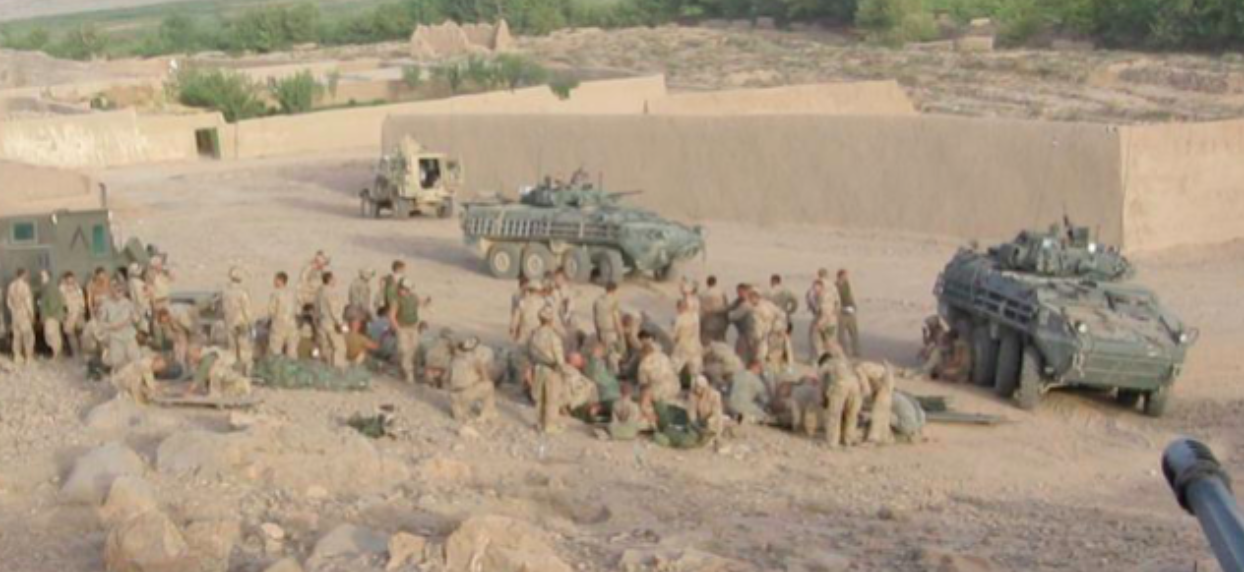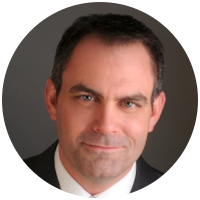On 4 September 2006, during Operation Medusa, the Canadian Battle Group was preparing to re-assault Objective Rugby, the Taliban’s main defensive position west of Kandahar City. Before launching the attack, our forces at Ma’Sum Ghar, a mountain feature south of the objective, was strafed by a coalition warplane.
It was daybreak and I was standing in the turret of my light armoured vehicle. My gunner, seated to my left, was asleep as we had been taking turns on watch throughout the night, scanning the horizon for Taliban troop movements.
Out of the corner of my left eye, about 15-20 meters away, was a massive explosion of light—as if an electrical transformer had blown. At first I did not know what hit us. Then came the unmistakable sound of an A-10 Warthog firing its 35mm high explosive rounds.
After the dust had settled the extent of the carnage started to become clear. The result was one soldier killed and 35 wounded, including five from my squadron.
This also marked the third time that I had nearly been killed.
Soldiers lept into action and began administering first aid. There was no time for centralized decision making and orders. I dispatched three people from my vehicle to assist with the mass casualty situation: the squadron medic, my gunner who was advanced combat first aid qualified, and my sergeant-major who is trained to organize a large casualty collection point.
I remained in the vehicle monitoring the radios and scanning the enemy side of the battlefield.

[Awaiting the arrival of the medical evacuation helicopters, soldiers performing first aid and triage on the injured during the mass casualty situation]
After several years of reflection and consolidating the insights, here is what I learned from that experience.
- Perspective. At its most basic definition, leadership is the influence to get work done through others. The question then becomes where should a leader be located and what role should they play in any given situation to have maximum impact—to best influence the outcome? This pivotal question applies to both time and space.
The military exhorts the notion of “leading from the front.” This approach is crucial for several reasons; notably to stay abreast of developments on the ground and to remain connected to those soldiers on the front lines and, thereby, sharing the same risks as those troops who fight the good fight. However, context is paramount: leading from the “front” should not always be taken literally.
A leader’s involvement in any endeavour spans its entire lifecycle from planning to execution to wrap-up. By the very nature of these activities, simplistically, a leader will need to adopt a future orientation during planning, be present in the moment during execution, and reflect upon the past when considering lessons learned. In reality, a leader must continuously assess where and when they can provide the best value. When to search the past for guidance, when to jump into the details and help the doers at the point of friction, and when to stand back to regain perspective and scan the horizon / future for threats and opportunities.
After the A-10 strike, my immediate concern was deciding how to best resource the medical response. This meant sending those trained in the application of first aid and the management of mass casualty situations. There was nothing more of significance that I could add to that fight. When you have tasked your people with a job, often the best thing a leader can do is step out of the way and let them get on with it. As hard as it was to ignore the injured, particularly my own troops, my value was casting my glance further afield and turning my thoughts to the future—to reconstituting my reserve, shifting forces to achieve our objectives, and warning my unit back in Canada about the possible need for replacement soldiers. Maximum influence meant compartmentalizing my thoughts and feelings and shifting my actions in both time horizon and geographical space.
- Dealer in Hope. On one hand, as described above, I needed to regain a broad perspective to shrewdly make sense of a rapidly changing battlefield. And on the other, as Napoleon put it, I had to be a “dealer in hope.” Regardless of how grim the situation became, it was my role as a leader to bolster the fighting spirit and morale of my troops.
When we ask great things of our people, ask them to sacrifice so that the team can achieve its goals, they need to believe—believe in the mission, believe in you as their leader, believe in each other, and believe in themselves. Hope compels people to face their fears, persevere through struggle, and overcome the seemingly impossible. A leader must kindle that fire and strengthen the bonds of belief.
There is a natural human tendency when hit with extreme chaos to want to curl up and hide or hunker down to withstand the storm. I had to fight that urge and get out from behind the protection (real and imagined) offered by my armoured vehicle and visit my troops. Based on the events of the last two days, we had just been through a literal baptism by fire into the ranks of combat veterans. It was normal to feel fear. We would get through it together, shoulder-to-shoulder. They were well trained soldiers and they were ready. My role, as a dealer in hope, was to remind them that they were ready.
Maximizing your impact as a leader means contextually shifting your perspective between a laser focus on details and a long-range vision on strategy. The ability to be two things at once (often two opposites things at once) and hold the fulfillment of operational requirements while looking after your people. The ability to not be torn apart by these opposing forces, to embrace the conflict and paradox of life, to hold them in a creative tension, is the art of leadership.
How are you developing the art of your leadership?

About the Author
In 2006, then Major Mark Gasparotto deployed to Kandahar, Afghanistan as the Commander of 23 Field Squadron. The Squadron provided combat engineer support to the 1st Royal Canadian Regiment Battle Group during Canada’s second rotation in theatre. Upon his return home, Mark and 12 of his former officers and soldiers wrote the book Clearing the Way: Combat Engineers in Kandahar, now an award winning documentary film.
Retiring from the Canadian Armed Forces in 2017 at the rank of Colonel, Mark is now the President of the Gasparotto Group.
The Gasparotto Group helps organizations create cultures that develop highly effective leaders and build strong, resilient teams.
Source: https://gasparotto.co/2020/03/15/what-i-learned-getting-hit-by-friendly-fire/
![Screen-Shot-2020-03-15-at-5.37.11-PM[1]](https://mynewsroom.ca/wp-content/uploads/2020/04/Screen-Shot-2020-03-15-at-5.37.11-PM1.png)
